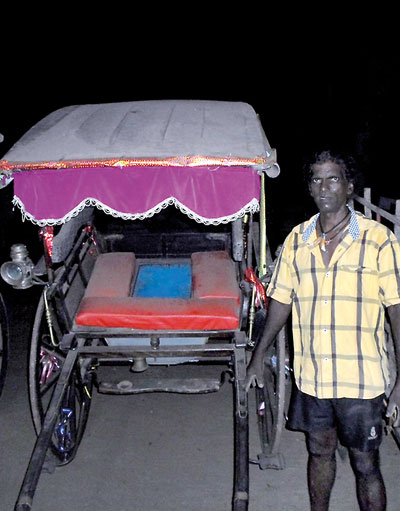News
The carpenter’s carts of many colours, sizes and purposes

W.G. Marcus Fernando with his carts
April –the festive month of the Sinhala and Tamil New Year is coloured with the flamboyant flowers of the Erabadu trees that stand on the wayside along which traditional carts are lining to race to win the Avurudu Thilina (trophy).
At a time when rural youth are leaving the mammoty and broom-stick , one can still site a youth or two sitting on a “thirikkale” or a “bara bage “ in some villages.
As both Sinhalese and Tamils prepare for the Sinhala and Tamil Avurudu Utsavaya I talk to W.G. Marcus Fernando, 62, from Bambukuliya. He is a living example for preserving our traditional values.
Though he is not from a well- to- do family, by profession a carpenter, he is proud and rich enough to be possessing 36 carts. He hasn’t done his A/Ls but his education at Muruthana K. V. and Kochchikade Maha Vidyalaya has given him enough knowledge in traditional values. He says there are about seven kinds of carts in Sri Lanka, including baby tantoos, Moratuwa Bakki Karattaya, Bara Bage, Bara Karaththaya, Dunu Bage, Tirikkalaya and Ali Karaththaya. When asked to explain the uses of them he said, “Baby tantoos were used to transport babies by native physicians and Arachchiralas. Moratuwa bakki karaththaya was used for travelling while the bara bage was drawn by one bull and the bara karaththaya drawn by two bulls was used to carrying loads. Dunu Bage drawn by one or two bulls was used for carrying goods, but the trikkalaya was used for different purposes. It was used for races and training young calves. “Iit is interesting to note that some notorious thugs used to use the Tirikkalaya as a place to hide their swords.
Explaining the different parts of the cart he said the roof of the dunu karaththaya was made of cane and cadjans soaked in water for some days so that they could last for a longer period and the roof of tantoos were made of leather. Bon leeya and the ‘viya gaha ‘ yoke were made of Halmeella, Domba and Maadam. The wheels had round and flat frames two inches wide. ‘Bos gediya’ the hub of the wheel is eight inches in diameter he said.

“You may have not heard of the ali bandina karththaya’ he says. There is only one remaining and it is at the Martin Wickremasinge museum. It was used by the Bandaranaike family he says. A proud Mr. Fernando doesn’t fail to mention how he appeared in the tele-drama Sathpathini with his tantoo cart carrying the famous actress Menaka Peiris.
“I am a carpenter, sometimes people hire my carts for weddings , functions at hotels and religious processions. My charges range from Rs 3500 to Rs.6, 500 a day. But my main purpose is to preserve our ancient traditions so that our younger generation could see the value of them.

